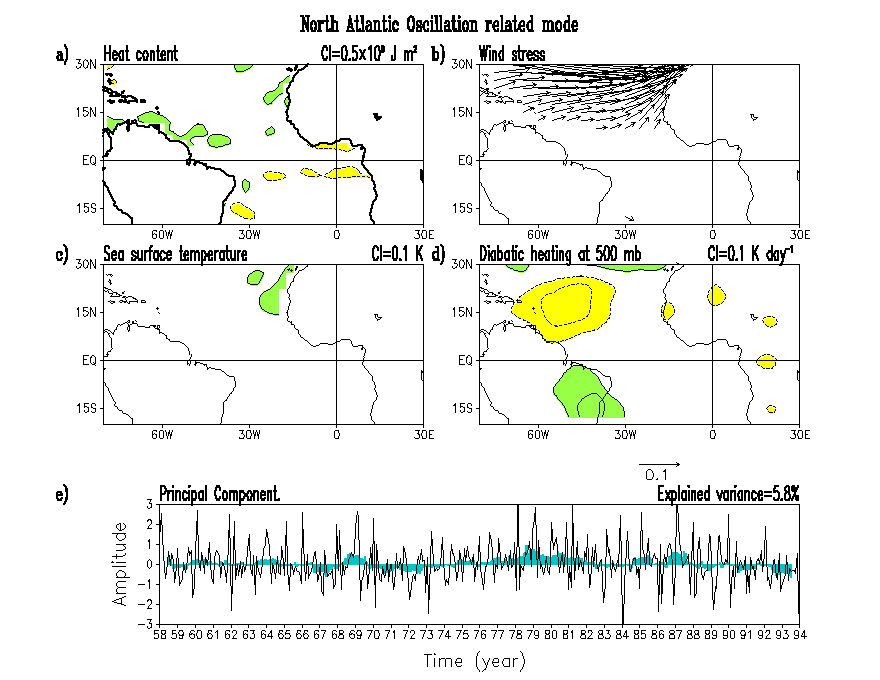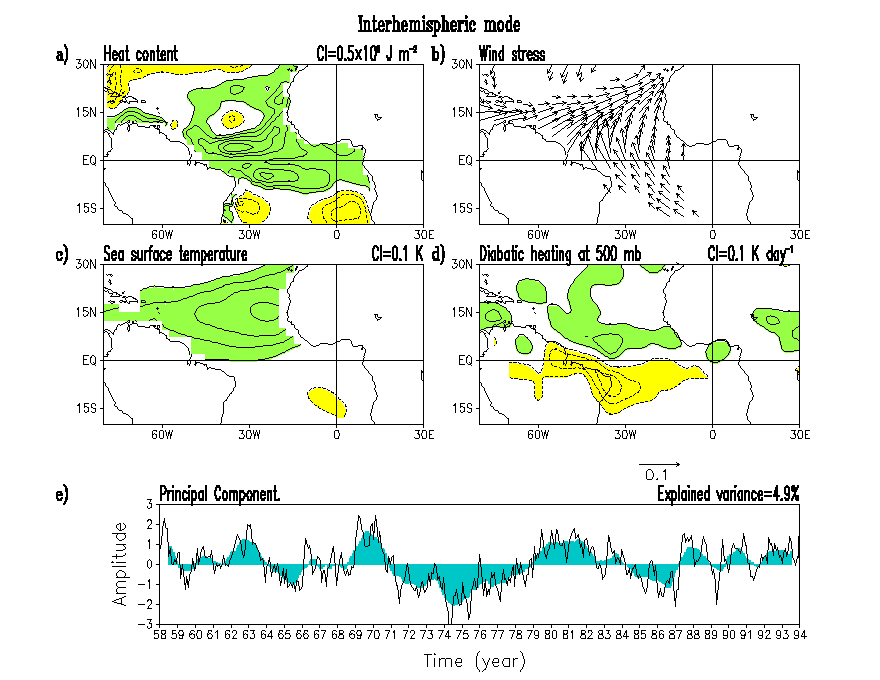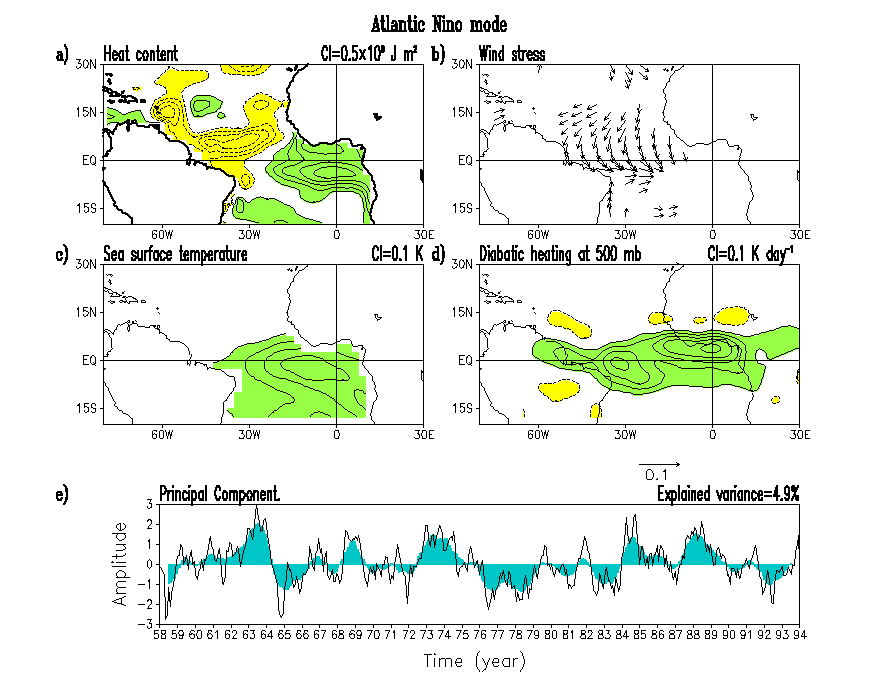


(looking for coupled the modes)
Data. The primary data set for sea surface temperature (SST), and surface winds (i.e. wind stress) for this analysis is COADS from daSilva et al. (1994). For the oceanic heat content, subsurface temperatures in the upper 276 m from the ocean data assimilation analysis of Carton et al. (2002) are used. Diabatic heating at 500 mb is residually diagnosed (Nigam et al., 2000) from the NCEP reanalysis (Kalnay et al., 1996). Data are cosntrained to the tropical Atlantic basin (30E-80W, 20S-30N) for the 1958-1993 period. In what is to follow the main interest is on the coupled variability so special attention will be paid on those modes that capture such variability.
Methodology. Before doing anything, the fields are detrended using a least square technique to exclude any long-term trend. Anomalies are calculated with respect to the monthly/season means (i.e. annual cycle removed), and then an area weighting of the anomalies is done in order to avoid bias due to unequal areas of a latitude-longitude grid. Finally, the weighted anomalies are normalized dividing them by their corresponding square root of the spatially integrated temporal variance. A covariance based Rotated Principal Component Analysis of monthly anomalies for the tropical Atlantic domain is carried out. EOFs of the covariance matrix are obtained from the Singular Value Decomposition analysis of the combined anomalies. The eigenvectors are then rotated using the VARIMAX technique.
Basic Experiments. It is possible to identify three main patterns from de rotated EOF analysis performed for the 1958-1993 period, namely, midlatitudes-related, Atlantic Nino, and Interhemispheric:
Mid-lat-related Mode
Interhemispheric Mode
Atlantic Nino Mode



Whose decaying time to the 1/e autocorrelation
value are ~1 month for the midlatitude-related mode, ~11
months for the Interhemispheric
Mode, and ~6 months for the Atlantic Nino Mode, as shown here.
The focus here is on the two tropical
modes, the Interhemispheric and Atlantic Nino modes.